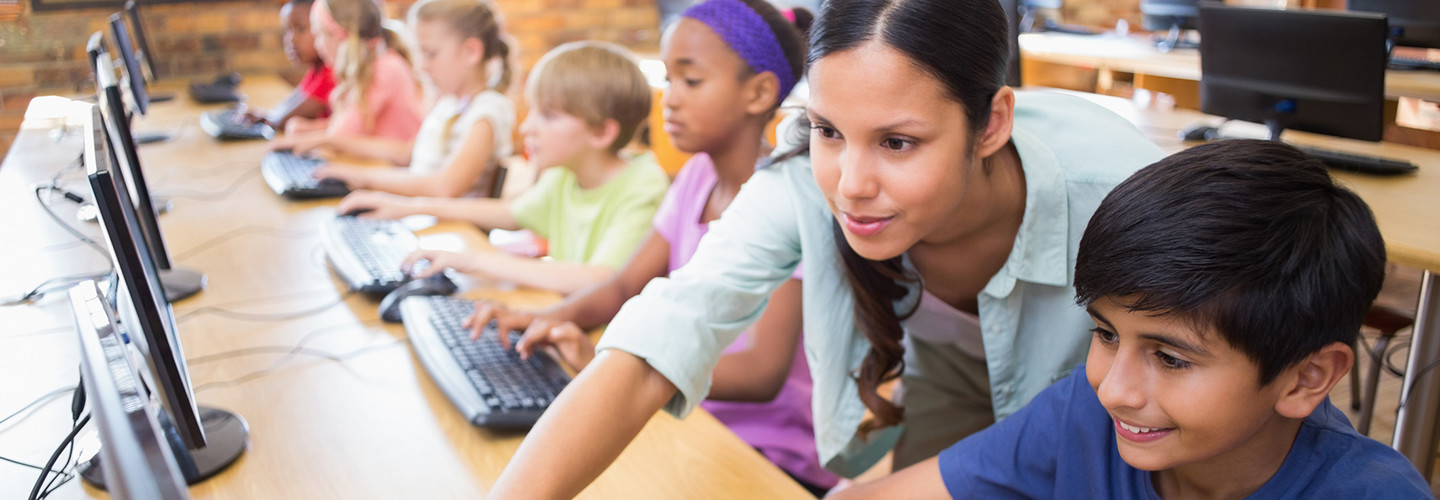What Is on the Horizon for Education Technology?
Is there anything more exciting today in schools than the marriage of technology and pedagogy? Educators are finding new ways to connect with students, using students’ individual needs and wants to guide their instruction. A deeper connection forms between teacher and student when technology is used to enhance their relationship.
“The NMC/CoSN Horizon Report: 2016 K-12 Edition,” which reveals emerging technology trends in education over the next five years, recently was released. In it, we see which technologies may be used to advance personalized learning for millions of students across the globe, including virtual reality, robotics, makerspaces, online instruction and wearable tech.
Most important, two long-term trends were identified in the report, which was jointly conducted by the New Media Consortium and the Consortium for School Networking. Schools are redesigning their classroom spaces for more hands-on learning and incorporating technology education to prepare the next generation to become part of a technology-based workforce.
Wide Open Spaces Make Room for Collaboration
For learners today, movement and creativity in education are paramount. Mobile technology frees students from the old model in which a teacher lectures from the front of a classroom that is laid out in rows of desks. Instead, teachers have become coaches and guides in today’s modern pedagogy, which includes blended learning, project-based learning and small-group instruction. This collaborative model fosters teamwork and cooperation, and the layout of the classroom enhances that experience.
Students are more engaged and perform better when school furniture and technology transform to create a more collaborative environment. Classroom designs have been shown to cultivate deeper and more student-centered learning encounters that are more flexible, active, mobile and fun. These spaces, bolstered by technology, continue to prepare students for the real world and workforce. We need to leverage available and future technologies to promote active learning.
Looking to the Future of Technology
In the short term, the Horizon Report identified coding as an emerging literacy trend that deserves our attention.
“As the number of computer science jobs are expected to proliferate in the next five years, there is a need for students to learn coding and programming skills, which have proven to bolster problem-solving, creativity and critical thinking skills,” the report states.
Similarly, advancements in technology can further drive the innovative ways in which we teach our kids. Makerspaces and online learning are hot right now, with robotics and virtual reality expected to be widely adopted within two to three years. Artificial intelligence and wearable technology will be considered mainstream within four to five years, according to the report.
Of course, no school year is without its challenges. Many districts, especially in rural areas, face the weighty issue of digital equity. Students who now have access to broadband services in schools thanks to the expansion of the E-Rate program, still have to face the prospect of completing digital homework with limited or no internet access at home.
“Even in the face of increasingly advanced technologies and quality learning materials, not every demographic has the same level of access, and learning outcomes are still unequal throughout the world,” the report states.
This article is part of the "Connect IT: Bridging the Gap Between Education and Technology" series. Please join the discussion on Twitter by using the #ConnectIT hashtag.
![[title]Connect IT: Bridging the Gap Between Education and Technology [title]Connect IT: Bridging the Gap Between Education and Technology](http://www.edtechmagazine.com/k12/sites/default/files/articles/2014/05/connectit.jpg)








